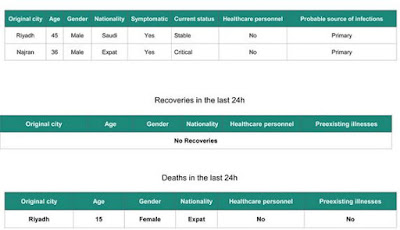 |
| Credit NIAID |
#13,180
This year's flu season has once again highlighted the pressing need for a better flu vaccine - one that isn't easily foiled by subtle changes in the virus or stymied by 60 year old egg-propagation technologies.
While progress has been made (cell culture-propagated vaccines, adjuvanted and high dose vaccines), today's vaccines far too often provide only modest protection against a virus that kills tens of thousands of Americans every year.
The holy grail - dubbed a `universal' vaccine - it is often fancifully described in the popular press as being a `one time (or every few years) shot' that would convey nearly full protection against all flu subtypes.The reality is, while that would be optimal, the criteria (see above) for a `universal' vaccine is a bit more realistic; a 75%+ VE (Vaccine Effectiveness) across multiple (seasonal & novel) subtypes that would last at least a year.
Despite these reduced goals, the road to a universal flu shot is a long one, and success - at least in the near term - is far from guaranteed.Today the NIH's NIAID ( National Institute of Allergy and Infectious Diseases) unveils their strategic plan to accomplish this goal in a major article published in the Journal of Infectious Diseases and in a press statement.
A Universal Influenza Vaccine: The Strategic Plan for the National Institute of Allergy and Infectious Diseases
Emily Erbelding, M.D., M.P.H Catharine Irene Paules, M.D Alison Deckhut Augustine, PhD Stacy Ferguson, PhD Anthony S Fauci, M.D Paul C Roberts, Ph.D Diane Post, Ph.D Barney S Graham, MD, PhD Erik J Stemmy, Ph.D
The Journal of Infectious Diseases, jiy103, https://doi.org/10.1093/infdis/jiy103
Published: 28 February 2018
Views PDF
Abstract(Continue . . . )
A priority for the National Institute of Allergy and Infectious Diseases (NIAID) is development of an influenza vaccine providing durable protection against multiple influenza strains, including those that may cause a pandemic, i.e., a universal influenza vaccine. To invigorate research efforts, NIAID developed a strategic plan focused on knowledge gaps in three major research areas, as well as additional resources required to ensure progress towards a universal influenza vaccine. NIAID will use this plan as a foundation for future investments in influenza research and will support and coordinate a consortium of multidisciplinary scientists focused on accelerating progress towards this goal.
Media Advisory
Wednesday, February 28, 2018
NIAID unveils strategic plan for developing a universal influenza vaccine
WHAT
Developing a universal influenza vaccine — a vaccine that can provide durable protection for all age groups against multiple influenza strains, including those that might cause a pandemic — is a priority for the National Institute of Allergy and Infectious Diseases (NIAID), part of the National Institutes of Health. Writing in the Journal of Infectious Diseases, NIAID officials detail the Institute’s new strategic plan for addressing the research areas essential to creating a safe and effective universal influenza vaccine. They describe the scientific goals that will be supported to advance influenza vaccine development. The strategic plan builds upon a workshop NIAID convened in June 2017 that gathered scientists from academia, industry and government who developed criteria for defining a universal influenza vaccine, identified knowledge gaps, and delineated research strategies for addressing those gaps.
The cornerstone of both seasonal and pandemic influenza prevention and control is the development of vaccines against specific influenza strains that pose a potentially significant risk to the public. Seasonal influenza vaccines are made anew each year to best match the strains projected to circulate in the upcoming season. However, this approach has limitations and difficulties. To reduce the public health consequences of both seasonal and pandemic influenza, vaccines must be more broadly and durably protective. Advances in influenza virology, immunology and vaccinology make the development of a universal influenza vaccine more feasible than a decade ago, according to the authors. To develop a universal influenza vaccine, NIAID will focus resources on three key areas of influenza research: improving the understanding of the transmission, natural history and pathogenesis of influenza infection; precisely characterizing how protective influenza immunity occurs and how to tailor vaccination responses to achieve it; and supporting the rational design of universal influenza vaccines, including designing new immunogens and adjuvants to boost immunity and extend the duration of protection.
The authors state that a coordinated effort of guided discovery, facilitated product development and managed progress through iterative clinical testing will be critical to achieving the goal of a universal influenza vaccine. NIAID will establish and support a consortium of scientists to meet designated goals for a universal influenza vaccine and will expand the Institute’s research resources by establishing long-term human cohorts, supporting improved animal models of influenza infection and expanding capacity for conducting human challenge studies.
The authors emphasize that broad collaboration and coordination in many disciplines and involving government, academia, philanthropies and the private sector will be vital to achieving the goal of developing a universal influenza vaccine. NIAID intends for the plan to serve as the foundation for its research investment strategy to achieve this important public health goal.
(Continue . . . )















